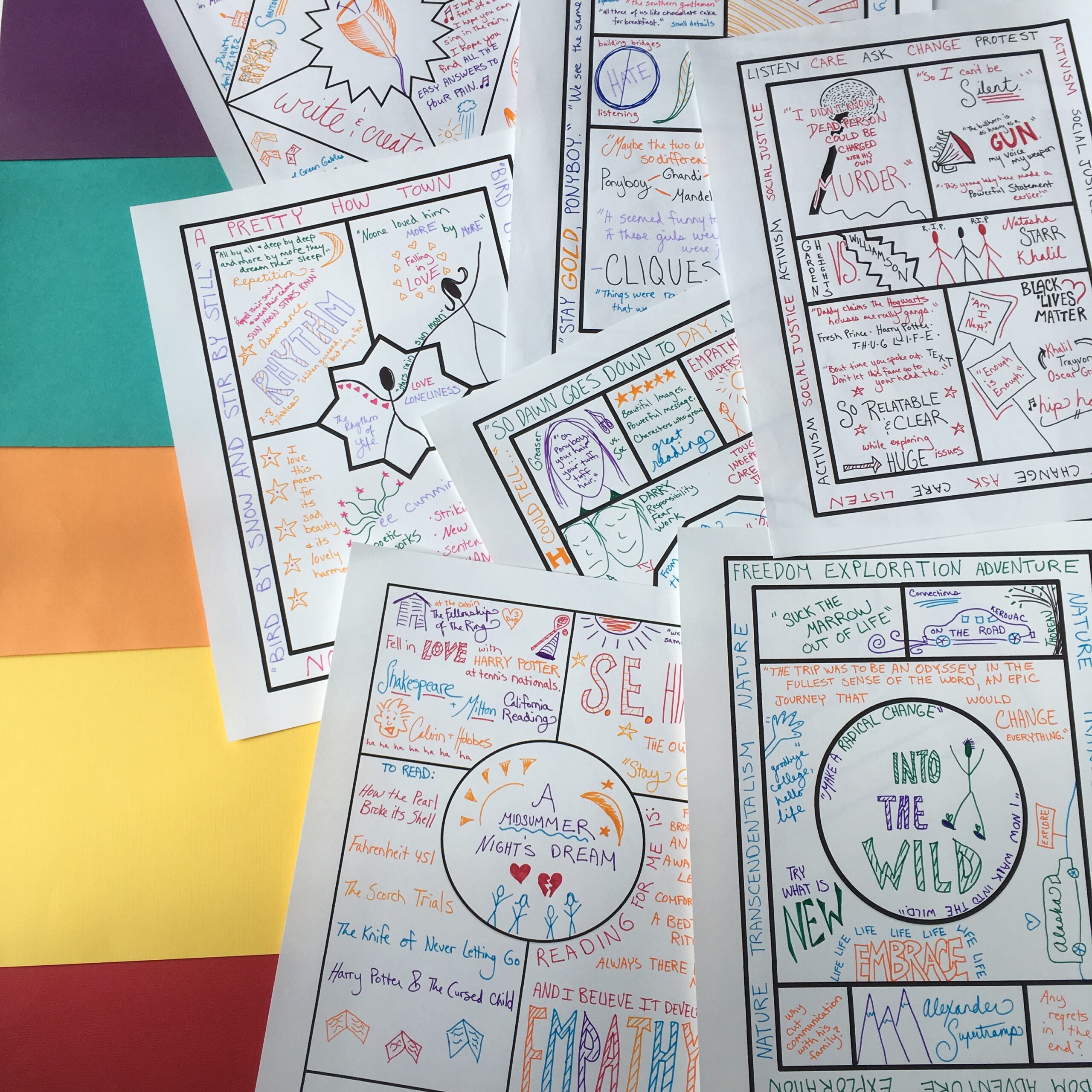
I could call this post “How to Deal with Student Cell Phones,” but let’s face it, there is no magic pill. The problem (and the promise) of the smart phone is one of the great challenges of our generation.
With a smartphone, a student can check their school email, snag a QR code link and watch a First Chapter Friday video, record a podcast about their genius hour project, contribute to a class bookstagram account with choice reading reviews, snap photos of a writing makerspace project to help guide their writing later, and so much more.
Or they can Snapchat while you’re trying to teach a Shakespeare lesson, watch TikTok when they’re supposed to be reading Fahrenheit 451 (oh the irony), or pick up calls in the middle of class.
What’s a teacher to do?
For most folks, it’s an issue every. single. day.
Whether you’ve got a cute plastic shoe rack hanging from your door for phones, a lovely charging station with a funny name, a clearly posted school policy backed up by admin, or no clue what you want to do about phones this year, chances are, no one thing is going to solve this issue forever.
It’s not like we adults have it totally figured out either, am I right? Do you answer a call from your granddaughter when you’re at dinner with your best friend? Is it okay to have your phone in bed at night, if it’s just to read? Is scrolling after the kids go to bed when you really just need ten minutes to rest (that turns into forty-five) a big deal?
I know I don’t have all the answers when it comes to phones, but I’m trying to be conscious of my use, and I think this is a great place to start with students too. While they may have run into plenty of policies and rules in their day, and even warnings about addiction and too much screen time, they may not have had many chances to talk about the issue and really think about the role student phones play in their own education.
So with that in mind, today I want to offer some multimedia options to act as prompts. You could share any or all of these as precursors to partner, small group, or whole class conversations or individual writing about cell phones at school. These pieces run the gamut, from a student talking about cell phone addiction to a ballet director choreographing a piece about it.
After you watch, write, and talk, ask students for their opinions on the role cell phones should play in class (and maybe also in our lives). Ask about their real needs, their wishes, their fears. If you can, think about how you might take their ideas into account as you craft the policy you will display and respect for the rest of the year. See if you can use some of their own language as you create a policy that will protect your learning space while honoring any needs they might truly have.
Ready? Let’s dive in.
Watch Tanner Walton’s Ted Talk, “Cell Phone Addiction”
Tanner makes some great points, and students might appreciate hearing from another student.
Listen to Marshall Davis Jones’ poem, “Touchscreen”
This powerful piece of performance poetry will definitely start conversations.
Read about and view photographs from the artistic collection, “Screentime”
In this photographic series, people would rather stare at their phones than pay attention to lavish parties happening all around them.
Watch a bonus clip from “The Social Dilemma” about social media and mental health
The Social Dilemma is a great text for class, but there are a lot of short clips you can use if you don’t have time for the whole thing.
Learn about Christopher Wheeldon’s ballet, “Bound To”
From the title to the jarring juxtaposition of grace and addiction, this ballet invites conversation for sure.
I hope one or all of these pieces will help you start helpful conversations with your students about their phones this year. You might consider using one or two of them early on to set up your policy, and then revisiting the issue with more clips and conversation later in the year if you have the time.



























2 Comments
Your blog on this topic came right on time. This year will be my first year teaching high school. I’ve taught middle school for many years and for the most, cell phones in class was manageable. Now, I have come to realize, through many summer trainings, that it is a serious issue in my new school. Your info falls in line with my plans. I wanted to capture my students’ voices on the topic. Your ideas are great ways to segue into that discussion. Thank you so much!
I’m so glad it’s helpful to you, Angela! This is such a tricky issue, but such an important one to address for all sides. I hope you’ll be able to find a good balance with your students.